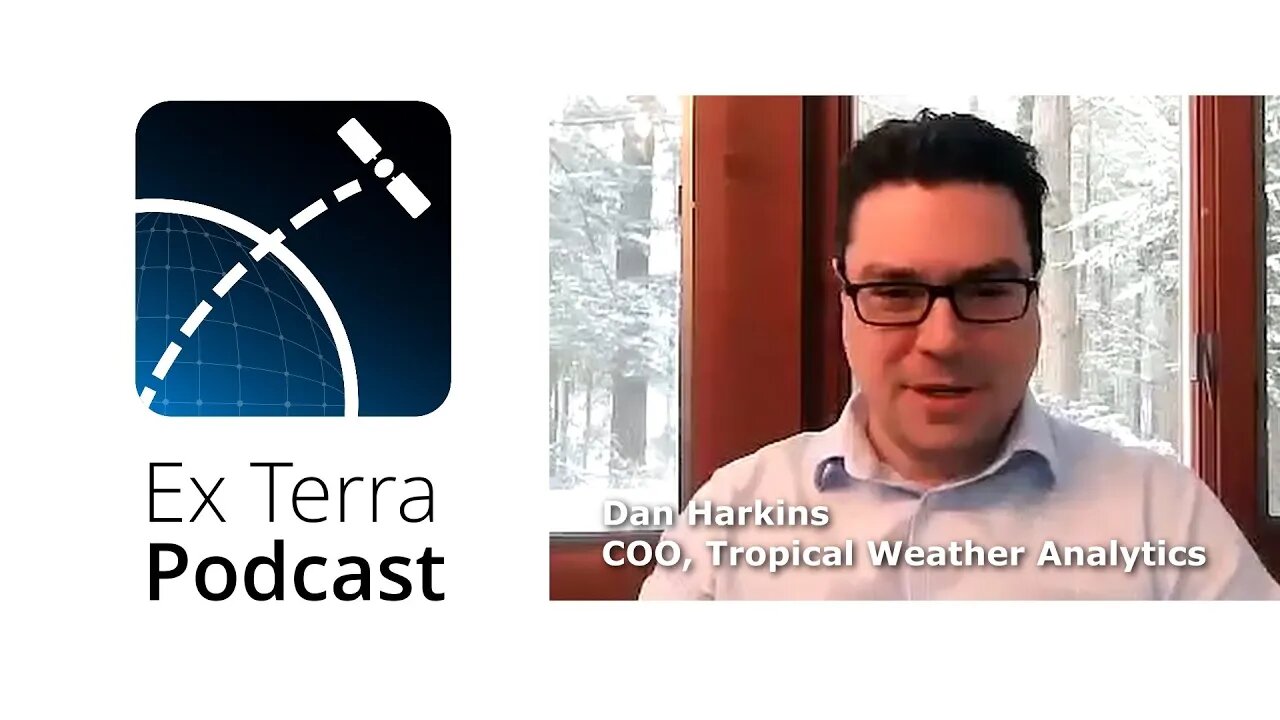Premium Only Content

Dan Harkins - Tropical Weather Analytics: Ex Terra podcast
Since the launch of the first weather satellite in 1960, these spacecraft have vastly improved weather forecasting around the world. Weather satellites now provide incredibly detailed images of weather systems as well as a wealth of data that make make those forecasts extremely accurate
They’ve also gotten much smaller. On this edition of The Ex Terra Podcast, Tom Patton talks with Dan Harkins, Chief Operating Officer of Tropical Weather Analytics, which is developing a constellation of weather forecasting nanosatellites.
Current weather forecasting models cannot keep up with the pace of climate change and extreme events. The NanoSats being developed by Tropical Weather Analytics will deliver the missing data set forecasters need to make more accurate and reliable weather predictions, the company says.
The polar winds interact with the jet streams and drive the majority of weather patterns across the globe. But existing satellites only provide a 2D solution to a 4D problem, measuring winds in just the horizontal axes while vertical winds are sparsely, and poorly, measured by weather balloons and stations. These new nanosatellites will leverage the company’s 4D (XYZ + Time) measuring technique to collect wind measurements across all altitudes with greater frequency and higher resolution. This gives forecasters a more accurate starting point to derive their forecasts from.
Weather Forecasting Nanosatellites will Supplement Hurricane Hunters
Rising temperatures are potentially making hurricanes more powerful and more frequent. The US is the only country with Hurricane Hunter Aircraft. At a cost of $250M per year to maintain those aircraft, Tropical Weather Analytics believes it can deliver similar observational capability with its satellites to the 20 vulnerable countries at 4% of the costs ($10M per year). The company will also aid the US when multiple hurricanes form simultaneously or the aircraft experience mechanical problems which could prevent timely observations.
How does what happens in space affect your everyday life? The Ex Terra podcast is dedicated to introducing you to many of the interesting people involved in the commercial space industry, and taking you behind the scenes with many of the companies making significant contributions to the new space economy. The podcast is available on Anchor, Spotify, Apple Podcasts, Google Podcasts, Breaker, Overcast, Pocketcasts and Radio Public.
00:00 - Start
00:13 - Introduction Dan Harkins
01:15 - What does Tropical Weather Analytics do?
02:18 - How can we improve hurricane forecasts?
04:37 - How does TWA technology help improve forecasting?
06:40 - How does a satellite measure wind?
08:11 - Whats limits us from better forecasts?
09:58 - The tech started on the ISS
12:24 - The TPA constellation
14:07 - Agile, mobile?
15:11 - How can this benefit business?
18:28 - Improving current forecasts
20:23 - Not just commercial aviation, general aviation as well
21:53 - Dan's background and the TPA team
24:25 - Crowdfunding
25:35 - How does CF work for a service?
26:58 - Will funding get tougher?
30:12 - Look ahead the next few years, what's ahead for space commerce?
32:12 - Closing
-
 14:53
14:53
Stephen Gardner
2 hours ago🔥Alex Jones WARNS Trump not to DEFAULT on THIS!!
21.1K55 -
 31:54
31:54
The Why Files
5 days agoThe Quantum Apocalypse: All Your Secrets Revealed
57.2K57 -
 LIVE
LIVE
Sgt Wilky Plays
6 hours agoSaturday Hangout and Games
232 watching -
 LIVE
LIVE
DeadMan88
7 hours agoWGT Golf Road to Master
70 watching -
 1:35:04
1:35:04
Winston Marshall
2 days ago“This Wasn’t Accidental!” Maajid Nawaz SPEAKS OUT on R*PE Gangs and The REAL Cover-Up
95.9K58 -
 23:46
23:46
barstoolsports
8 hours agoSurviving Barstool Drama Spills Over Into The Office | Stool Scenes
66K3 -
 5:11:58
5:11:58
Shield_PR_Gaming
9 hours ago01/18/25. Let's chill with MMORPG and then some shooters!! Read Description! You know you want to!!
44.9K2 -
 1:09:39
1:09:39
Tactical Advisor
8 hours agoTrump Inauguration & New Gun Releases | Vault Room Live Stream 014
41.9K4 -
 11:27
11:27
Adam Does Movies
21 hours ago $6.72 earnedWolf Man Movie Review - Does It Bite?
66.6K12 -
 11:57
11:57
inspirePlay
1 day ago $12.91 earnedLongest Drive Wins! Elite Long Drivers Battle in Par 4 Elimination
126K17